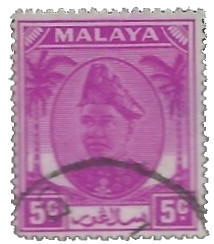
"F" Marginal Imprint
A US flat plate marginal marking, usually punched to the left of the upper right plate number, indicating that the plate had been hardened. This marginal marking is found most commonly on U.S. stamps from the 1920s and 1930s. The block at right has many interesting features. Since this was a "bi-color" stamp, the sheets were printed in two steps; first the black plate, in this case #19737, which included the vignette as well as the letters "TOP", "F" and the plate number, and then the red plate, in this case #19721, which also included an "F" to indicate the plate had been "finished" or hardened. The "TOP" was to prevent the printer from inadvertently placing the sheets in the press upside down, and thereby creating an invert. According to Wallace Cleland in the June 1990 Issue of the United States Specialist: "Apparently the "F" was originally the initial of Frank Martie, foreman of the hardening section; but one suspects that later custom transferred the meaning to "finished".

Face
The side of the stamp bearing the printed design, as opposed to the "back" of the stamp.

Face Value
The postage value or denomination of a stamp. Most U.S. stamps issued after 1940 are not even worth face value in quantity; it is not uncommon to find "discount postage" lots at 15%-20% below face value.
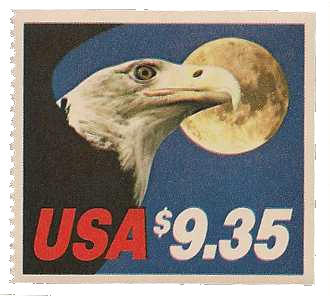
Facsimile
A reproduction of a stamp or cover, produced with no intention to deceive. This is in direct opposition to a fake.

Fake
A stamp, cover or cancel that has been produced to deceive a collector. The stamp shown is a US 78 chemically altered to look like the rare "Steel Blue"

Famous Americans
The US 1940 commemoratives honoring famous American authors, poets, educators, scientists, composers, artists, and inventors. The image shown illustrates the entire 35 Famous American stamp set.
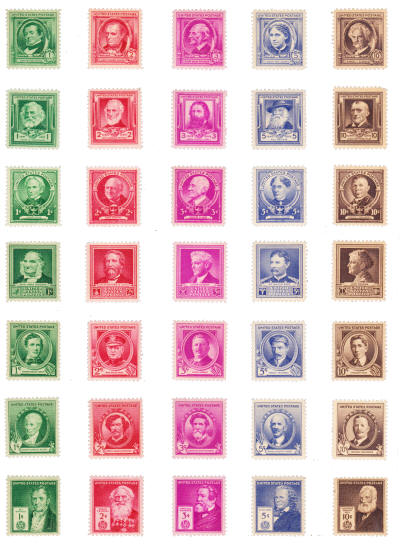
Fancy Cancel
A collectible cancel that is either usually artistic or geometric in design.
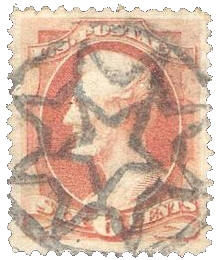
Farley's Follies
The nickname given to the 1935 special printing of stamps, in response to what was considered by some to be a lapse in judgment by Postmaster James Farley. Farley was asked by the President to supply him with sheets of imperforate and ungummed commemoratives. When some of these appeared in the philatelic marketplace, the protests from U.S. collectors proved so great the Post Office was, in a sense, forced to issue these makeup stamps.
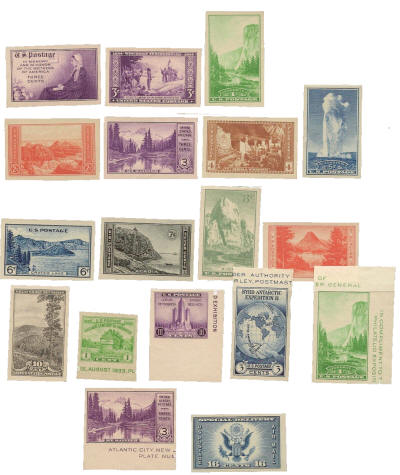
Farwell Perforations
Privately applied US perforations to imperforate stamps by the Farwell Company for use in affixing machines, primarily made by the Schermack Company.

Fast Colors
Colored inks resistant to fading when dipped in solvents and water.
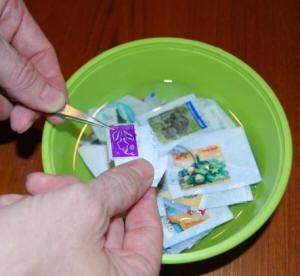
FDC
An acronym for "First Day Cover".
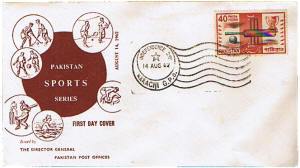
Field Post Office
A military postal service operating in the field, either on land or at sea. Frequently abbreviated FPO.
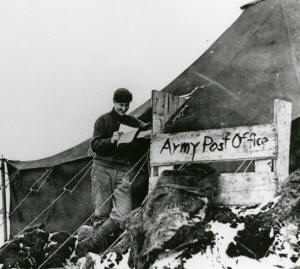
Fiscal
A revenue stamp or similar label denoting the payment of tax. Fiscals are ordinarily affixed to documents and canceled by pen, canceler or mutilation. Because of their similarity to postage stamps, fiscals have occasionally been used either legally or illegally to prepay postage. See also Postal fiscal, Revenues.
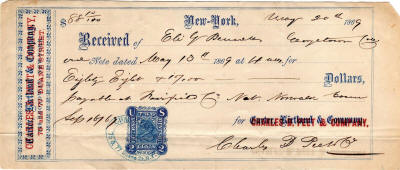
Fifth Bureau Issue
(US Presidential Series of 1938) nicknamed "the Prexies", they were the fifth set of definitive postage stamps to be printed by the Bureau of Engraving and Printing.
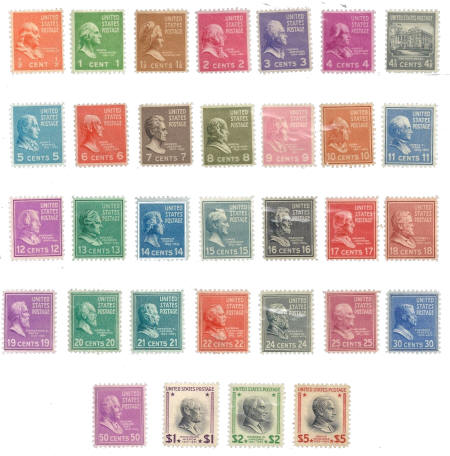
Fifth International Philatelic Exhibition (FIPEX)
The fifth in a series of international stamp shows hosted in the U.S. once every decade. This one was held in New York City in 1956. As usual, a stamp and a souvenir sheet were issued in conjunction with the show.
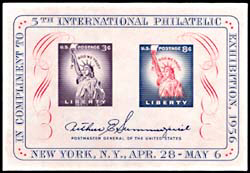
First Bureau Issue (Triangles)
The first set of definitive postage stamps to be printed by the Bureau of Engraving and Printing. These issues are usually referred to as the "Triangles" of 1894 and 1895. The stamps from 1894 were printed on unwatermarked paper and the stamp from 1895 were printed on double-line USPS watermarked paper.
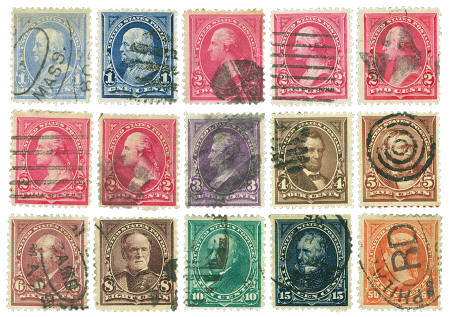
First Day Cover
A First Day Cover consists of a stamp placed on an envelope and cancelled with the date the stamp was issued and with a postmark from the city in which it was issued. A distinction is usually made between covers with or without address and with or without cachet. Collecting First Day Covers is still an important part of many U.S. collector's collections.
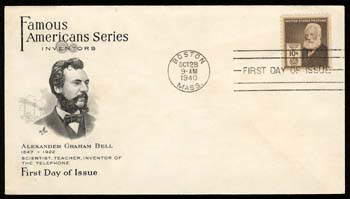
First Flight Cover
A stamped envelope, with cancel and often with a descriptive cachet, flown on the inaugural of a new airmail route.
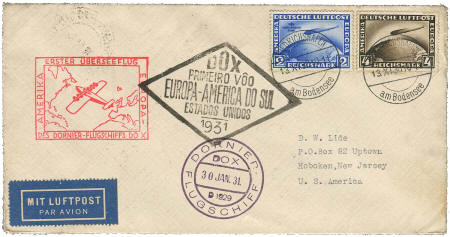
Flag Cancel
A cancellation that features a flag as part of its design, common in the US early 20th century.
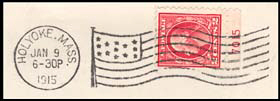
Fleet Post Office (FPO)
A official post office for use by military naval units abroad; frequently abbreviated FPO.
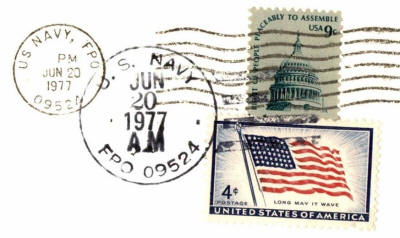
Flat Plate Press
A press that prints from a flat plate (as opposed to a curved or cylindrical plate). Until 1914 only the Flat Plate Press was used to print U.S. postage stamps.
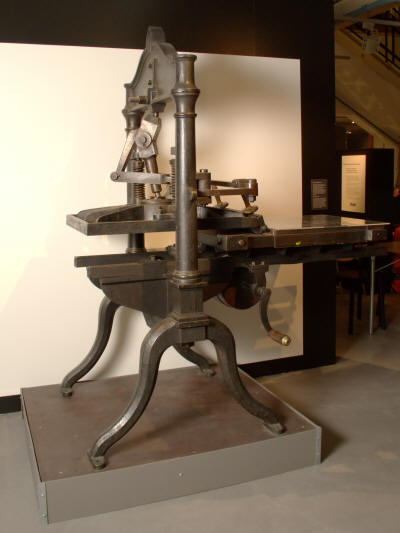
Flat Plate Press Plate Blocks
Are most often collected in a plate number block of six with the plate number centered in the margin next to the middle stamp, as opposed to a rotary press plate block which is collected in a block of four with the plate number in the corner margin.
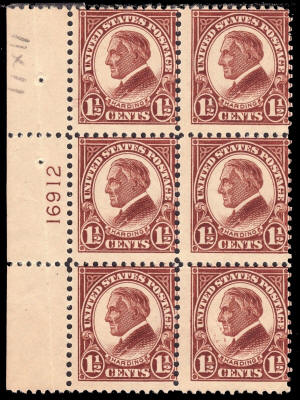
Flown Cover
A cover that has been carried aborad a flight, and bears evidence of having been flown.
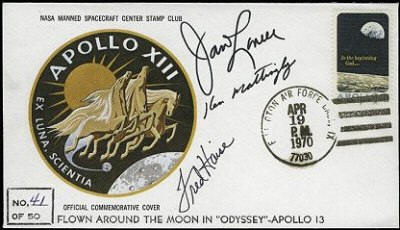
Flyspecking
The study of stamps of a particular issue that contain minor process and printing variations.
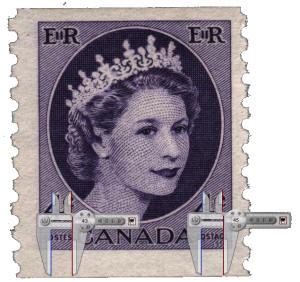
Folded Letter
A sheet of paper with the message written on the inside and folded over so that the name and address of the recipient could be written on the outside. The folded sheet of paper was sent without an envelope. The example at right is a folded letter sent on March 28, 1849, with a US #1 used for postage. The text of the letter was written above the reddish splotch at top and is not included here for space considerations. The red splotch is the remains of the wax used to seal the letter, removed when the letter was opened.
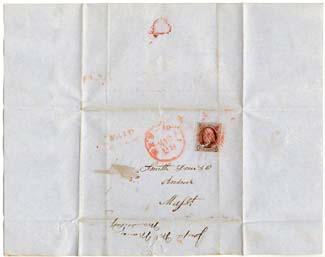
Foldover
The often dramatic stamp that results when the paper is folded over in either the printing or perforation process.
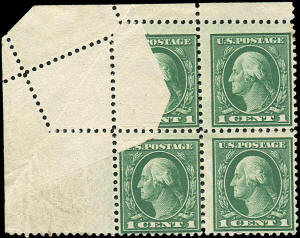
Foreign Entry/Transfer
A foreign entry is the remnant of an original design or part of the design that was not completely removed from the plate before the new entry is made. Sometimes the incorrect design remains undetected as in the five cent rose Washington Franklin error stamps.
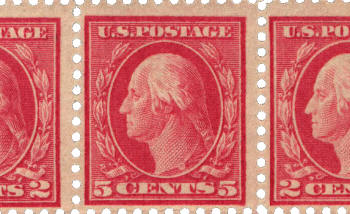
Forgery
An imitation of a stamp or postmark intended primarily to deceive and defraud collectors. Sometimes forgeries are made to deceive postal authorities. These stamps are counterfeits and of course bring much stiffer penalties from postal authorities than do the forgeries intended to deceive collectors. The stamp shown is the imperforate stamp, Scott 344, with perforations added to make it look like a Scott 519.

Forwarding Agent
A person or entity, usually in a foreign city, who sends a piece of mail entrusted to him on to an addressee in the most expeditious manner. This was a service made obsolete by the formation of the Universal Postal Union.
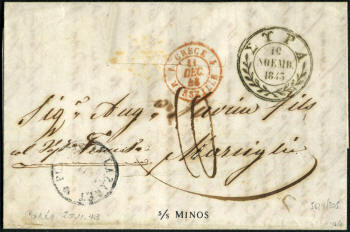
Forerunner
A stamp or postal stationery item used in a given location prior to the issuing of regular stamps for that location. Turkish stamps before 1918 canceled in Palestine are forerunners of Israeli issues. The term "forerunner" is also used to describe a stamp issued before another stamp or set, if the earlier issue may have influenced the design or purpose of the later issue.
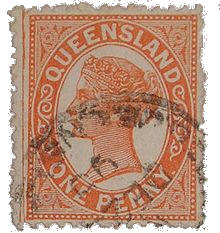
Fourth Bureau Issue
The fourth US set of definitive postage stamps to be printed by the Bureau of Engraving and Printing, often called the Series of 1922. The stamp shown is the eleven cent Hayes, the first denomination of the Series to be issued. The earliest printings tend to be bluer than the later printings; Johl called this shade "peacock blue", a description that, in the opinion of the editor, has all the romance and credibility of the "pigeon blood pink" of the three cent 1861 stamp. Scott lists this shade simply as "light blue".

Foxing
Orange brownish to dark brown stains on paper caused by a fungus. Foxing is usually found in areas of high humidity, particularly in tropical climates. Storing stamps and albums in air-conditioned rooms with controlled humidity may significantly retard foxing.
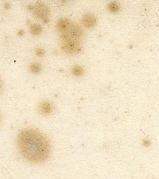
Fractional Usage (Bisect)
The use of a part of a stamp to pay the postage equal to less than the face value of the whole stamp. Although not always approved it was sometimes allowed when there was a shortage of stamps of the necessary denomination. Since a bisect or any other fraction of a stamp may be easily manufactured from the whole stamp, fractional usages are collected tied to a cover from a year and locale in which bisects were known to be used.
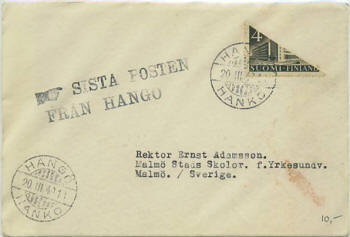
Frama
A general name used for an automatic stamp, derived from the name of the Swiss firm, Frama AG, an early producer of such issues. Automatic stamps are produced individually by a machine on demand in a denomination selected by the customer. There normally is no date on the stamp, as there is on a meter stamp. Also called ATM, from the German word Automatenmarken.
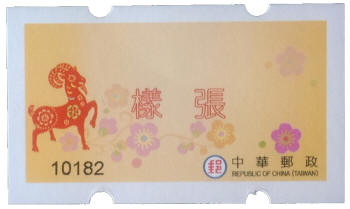
Frame
The frame is the part of the stamp design that surrounds the vignette, or central part of the design.

Franking
A marking on a cover, other than a stamp, that indicates that the postage has been paid.
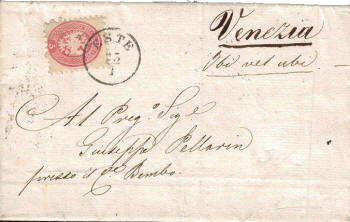
Freak
A freak is a mistake in the production of a stamp, such as color or perforation shifts, or over- or under-inking. Freaks are usually more common, less pronounced, and somewhat less collectible than "errors".
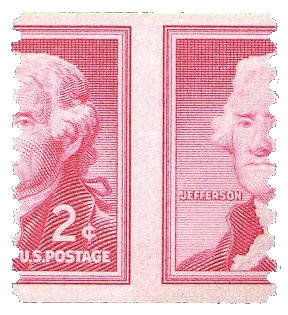
"FREE" or Free Frank
A handstamp bearing the letters "FREE" generally used on free franked US mail. A marking indicating the right to send mail without payment of postage. Free postage is sometimes extended to government and military officials.
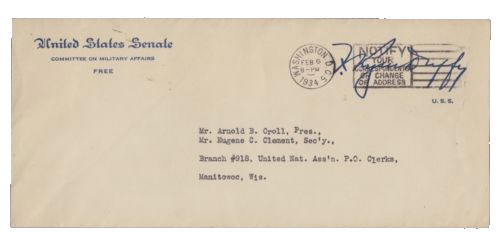
Front
The front part of a cover from which the back has been removed. The intact cover is known as an entire.

Fugitive Ink
Any ink that tends to run when soaked in water or dipped in watermark fluid. Many postmarks are printed with fugitive inks and care must be taken lest the ink run and ruin the stamp or cover.
